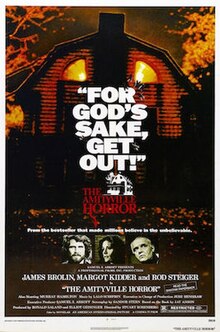
Alcatraz is not like any other prison in the United States. 1960. Frank Morris (Clint Eastwood) a criminal who has absconded from other facilities, arrives at the maximum security prison on Alcatraz Island near San Francisco, California. It’s unique within the US prison system for its high level of security and no inmate has ever escaped. The day of his arrival, Morris steals a nail clipper from the Warden’s (Patrick McGoohan) desk after the man gives him an introduction to the regime and notes on his file about Morris that the prisoner has a superior IQ.Over the next days, Morris makes acquaintances with some inmates: the eccentric Litmus (Frank Ronzio) an older man who is fond of desserts and keeps a mouse beside him at all times; English (Paul Benjamin) a black inmate serving two life sentences for killing two white men in self-defence who runs the library; and the elderly Chester ‘Doc’ Dalton (Roberts Blossom), who paints portraits and once grew chrysanthemums at Alcatraz. Doc’s portraits contain chrysanthemums as a symbol of human spirit and freedom. He makes a gift of one of the blossom heads to Morris. Morris also makes an enemy of Wolf (Bruce ‘Bear’ Fischer), a lewd rapist who harasses him in the showers and later attacks him in the prison yard with a knife. Both men are imprisoned in isolation in the hole. Morris is released while Wolf stays for 6 months. The Warden discovers that Doc has painted a portrait of him, as well as other guards. The guards’ paintings are flattering, recognising their humanity but the Warden’s painting, which has been kept out of view, seems to capture the ugliness of his cruelty. Enraged, the Warden removes Doc’s painting privileges. Doc is depressed and in the prison workshop hacks off several fingers of his right hand with a hatchet before being led away. Later, Morris encounters two bank robbers and brothers John (Fred Ward) and Clarence Anglin (Jack Thibeau) his old friends from another prison and he links up with prisoner Charley Butts (Larry Hankin) who’s in the next cell to his. Morris notices that the concrete around the grille in his cell is weak and can be chipped away, which evolves into an escape plan. Over the next months, Morris, the Anglins, and Butts dig through the walls of their cells with spoons soldered into makeshift shovel,, make papier-mache dummies to act as decoys and construct a raft out of raincoats that John squirrels away from his job doing inventory. During mealtime Morris places a chrysanthemum at the table in honour of Doc but the Warden stops by and crushes it, causing an outraged Litmus to suffer a heart attack. The Warden orders an inspection of Morris’ cell but finds nothing unusual. Despite this he issues orders for Morris to be relocated to a different cell as soon as possible. Wolf is released from solitary confinement and prepares to attack Morris again but English manages to intercept him and takes his knife while implying that his gang will beat up Wolf. That night, Morris and his fellow escapers decide they are now ready to leave … We don’t make good citizens but we make good prisoners. Adapted by Richard Tuggle from the 1963 fact-based account written by J. Campbell Bruce, this takes its inspiration from a real 1962 escape and marks the fifth and final collaboration between star Eastwood and director Don Siegel. Renowned for his economical aesthetic, Siegel’s customary approach yields pleasing dividends in the most austere setting imaginable. Lit up by a spare and shrewd performance by the star with capable satellites in the ensemble, this is ultimately structured around the major event, with some scenes reminiscent of The Great Escape (dumping the scooped-out cement dust in the yard) and intermittent scene-sequences of intimidation, violence and boredom. I always wanted to see San Francisco. I never thought it would be like this. McGoohan as the sadistic warden gets the lion’s share of the sharp dialogue but his position as the emblematic Man is confined to four scenes and although this takes place over two years, there is no clear passing of time, indicative of the experience of imprisonment in which no markers can be expressed and one day dissolves into the next. Some men are destined never to leave Alcatraz – alive. The sheer banality of life within these walls where only those sporadic acts of violence offer a change of pace to the psychological tedium is paradoxically thrillingly evoked with the execution of the plan proving an excellent procedural narrative scheme. The fact that this is more or less true and the final outcome remains a mystery just adds to the enjoyment. A great minimalist film. No one has ever escaped from Alcatraz and no one ever will
